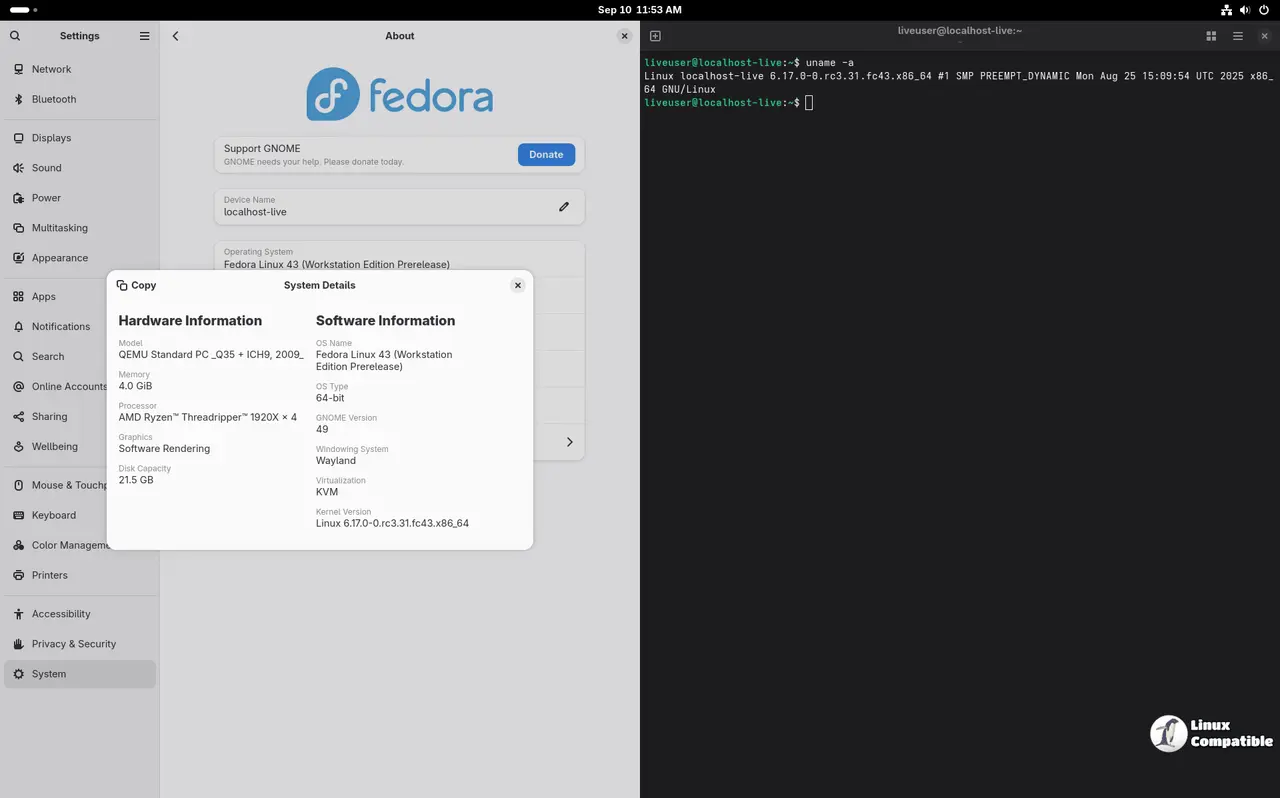For developers, significant updates have been made, including the upgrade of Python to version 3.14, alongside advancements in Java (Java 25-openjdk), Rust, and the introduction of new programming languages like Hare and Idris 2. The GNU toolchain has also been refreshed, with versions of GCC, binutils, and glibc being updated. Notably, the deprecated python-async-timeout package has been replaced by asyncio.Timeout, and the python-nose package has been retired.
System administrators will find improvements in the package management system, as Fedora has fully transitioned to DNF5, enhancing package management and image building. The Anaconda installer has been updated, discontinuing support for MBR installations in UEFI mode on 32-bit systems. The size of the /boot partition has been increased to 2 GiB to accommodate larger boot data, and automatic updates for both the system and Flatpaks on Fedora Kinoite are now in place.
Other enhancements include updates to PostgreSQL, Dovecot, and MySQL, along with significant improvements to Stratis 3.8.5, which enhances filesystem mounting at boot and provides more information on stopped pools. Fedora virtualization hosts now support confidential virtual machines using Intel TDX technology.
Security improvements are prominent, with the RPM packaging system upgraded to version 6.0, introducing multiple signatures per package and automatic signing. The initrd compression algorithm has switched from xz to zstd, leading to faster boot times and smaller initrd sizes. The YASM assembler has been deprecated in favor of NASM for improved compatibility, and the GnuPG2 package has been modularized to streamline its components.
In conclusion, Fedora Linux 43 not only enhances user experience through significant desktop and developer updates but also strengthens security and system administration capabilities. Users can download the latest version from the official Fedora website, ensuring they have access to the newest features and improvements. This latest release emphasizes Fedora's commitment to innovation and robust performance, making it a compelling choice for both desktop users and developers alike
Fedora Linux 43 released
Fedora Linux 43 has been officially released, bringing various improvements and updates to the operating system. The release includes changes such as GNOME using Wayland only, updated fonts for Noto Color Emoji, and security enhancements through the use of Glycin, a sandboxed image loading framework. For developers, Fedora 43 includes updates to popular packages like Python, Java, Rust, and Perl, as well as the introduction of new languages and frameworks like Hare and Idris 2. Additionally, system administrators will benefit from improvements such as the adoption of DNF5 for package management and image building and enhancements to the Stratis file system.


